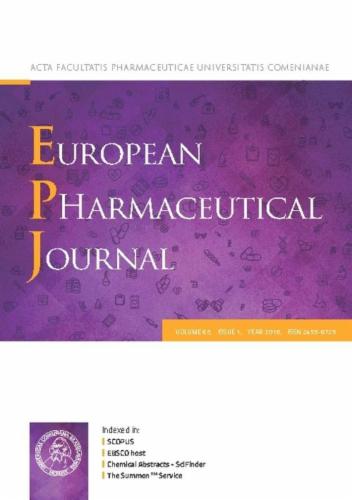抗体氧化和配方的影响:一种高通量筛选方法
IF 4.3
3区 医学
Q1 PHARMACOLOGY & PHARMACY
引用次数: 0
摘要
氧化是生物制药产品中一个复杂的降解途径,需要对其进行综合评价,以确保产品的稳定性和安全性。本研究的重点是在高通量(HT)配方筛选过程中实施氧化分析工作流程,以识别和减轻潜在的氧化责任。为了评估将氧化应激测试整合到HT配方开发中的可行性,我们通过改变几种配方参数,包括蛋白质浓度、缓冲体系和pH、表面活性剂类型和浓度以及抗氧化辅料的存在,分析了三种单克隆抗体的氧化敏感性。用可见光、过氧化氢和金属催化氧化诱导氧化应激。采用尺寸排除色谱和反相色谱亚基分析等HT分析方法来评估Fc和Fab亚基的聚集和修饰。开发了一种氧化评分工具,以简化大型数据集的评估。结果表明,制剂组成对氧化敏感性有显著影响。然而,不同抗体的结果差异很大,因此需要一种全面的分析方法。该研究证实,氧化分析工作流程是常规HT配方筛选的有效方法,可对生物制药配方的氧化稳定性进行全面评估。本文章由计算机程序翻译,如有差异,请以英文原文为准。

Antibody oxidation and impact of formulation: A high-throughput screening approach
Oxidation is a complex degradation pathway in biopharmaceutical products that necessitates comprehensive assessment to ensure product stability and safety. This study focuses on implementing an oxidative profiling workflow within a high-throughput (HT) formulation screening process to identify and mitigate potential oxidation liabilities. To assess the feasibility of integrating oxidative stress testing into HT formulation development, we analyzed the oxidation susceptibility of three monoclonal antibodies by varying several formulation parameters including protein concentration, buffer system and pH, surfactant type and concentration as well as presence of antioxidative excipients. Oxidative stress was induced using visible light, hydrogen peroxide, and metal-catalyzed oxidation. HT analytical methods such as Size Exclusion Chromatography and Reversed-Phase Chromatography subunit analysis were employed to assess aggregation and modification of Fc and Fab subunits. An oxidation scoring tool was developed to simplify the evaluation of large datasets. The results demonstrated that formulation composition can significantly influence oxidation susceptibility. However, the outcomes varied greatly among the different antibodies, highlighting the need for a comprehensive profiling approach. The study confirms that the oxidation profiling workflow is an effective method for routine HT formulation screenings, providing a thorough evaluation of the oxidative stability of biopharmaceutical formulations.
求助全文
通过发布文献求助,成功后即可免费获取论文全文。
去求助
来源期刊
CiteScore
9.60
自引率
2.20%
发文量
248
审稿时长
50 days
期刊介绍:
The journal publishes research articles, review articles and scientific commentaries on all aspects of the pharmaceutical sciences with emphasis on conceptual novelty and scientific quality. The Editors welcome articles in this multidisciplinary field, with a focus on topics relevant for drug discovery and development.
More specifically, the Journal publishes reports on medicinal chemistry, pharmacology, drug absorption and metabolism, pharmacokinetics and pharmacodynamics, pharmaceutical and biomedical analysis, drug delivery (including gene delivery), drug targeting, pharmaceutical technology, pharmaceutical biotechnology and clinical drug evaluation. The journal will typically not give priority to manuscripts focusing primarily on organic synthesis, natural products, adaptation of analytical approaches, or discussions pertaining to drug policy making.
Scientific commentaries and review articles are generally by invitation only or by consent of the Editors. Proceedings of scientific meetings may be published as special issues or supplements to the Journal.

 求助内容:
求助内容: 应助结果提醒方式:
应助结果提醒方式:


